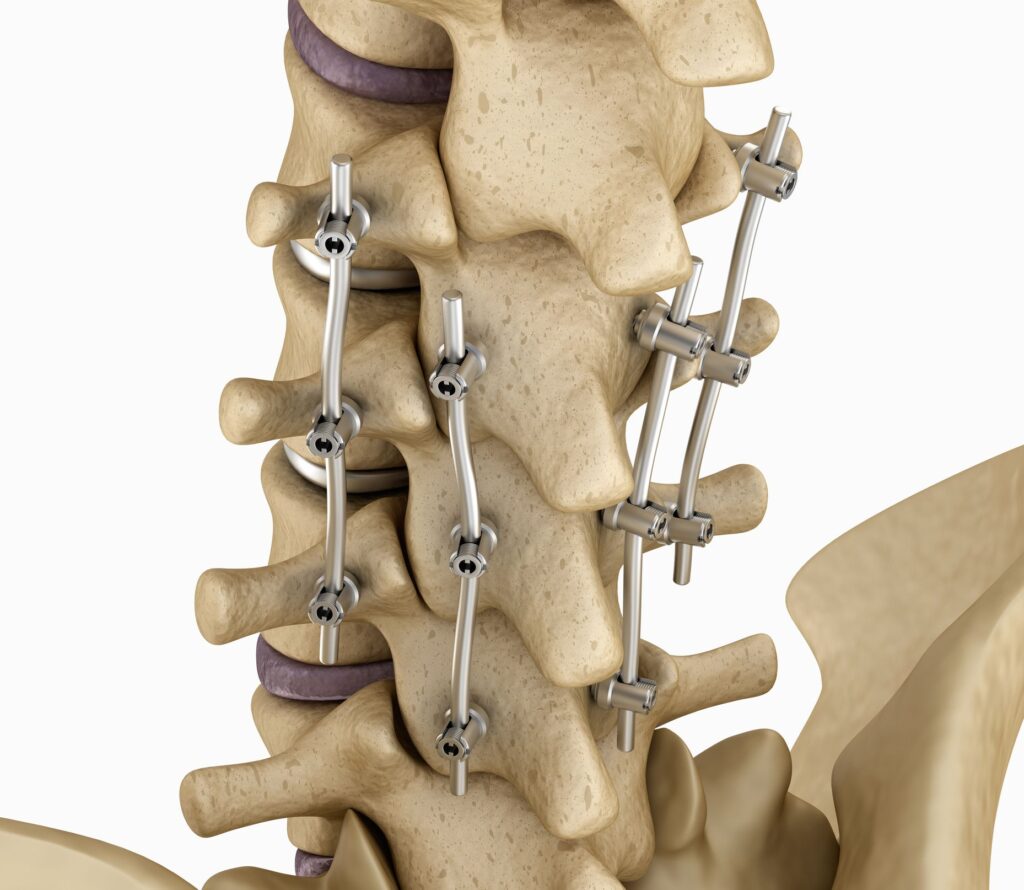Spinal Fusion

Introduction
Spinal Fusion Surgery involves reconnecting two or more vertebrae, to reinforce the structure of the spine. As the name suggests, it ‘fuses’ bones of the spine, making it a welding process of sorts. A surgeon inserts bone or a substance that resembles bone between two spinal bones during spinal fusion. The bones may be held together by rods, screws, or metal plates. After that, they can unite and mend as a single bone.
This surgery proves to be useful in treating a variety of spinal problems. It remedies back pain, numbness, muscle weakness, congenital spine conditions, slipped discs, scoliosis, spinal stenosis, and fractures. Spinal fusion is considered the last resort to most spinal problems, when medication, spinal injections, lifestyle modifications, and physical therapy do not work.

Why is it performed?
The goal of spinal fusion surgery is to permanently fuse two or more vertebrae in the spine together, preventing movement between them. It is generally done to treat spinal fractures, degenerative disc degeneration, severe scoliosis, and spinal instability. In order to provide long-term relief from persistent back pain that hasn’t improved with conservative therapy, the objective is to reduce discomfort, increase stability, and rectify spinal abnormalities.
How is it performed?
For the bones to join over time, the surgeon inserts bone graft material between the damaged vertebrae during spinal fusion. Occasionally, artificial bone substitutes are utilized, and the graft may be derived from the patient’s own body (autograft) or from a donor (allograft). In order to support the fusion and offer instant stability, screws, rods, or plates are frequently introduced. Depending on the problem being treated, the surgery can be done from a variety of angles, including the front (anterior), side (lateral), or back (posterior).
Possible complications
Even though spinal fusions are usually safe and effective, here are some possible issues to be mindful of:
- Infection at the surgery site
- Damage to the nerves resulting in weakness, numbness, or discomfort
- Incomplete or non-union of the vertebrae
- Thrombosis or severe bleeding
Recovery Period
It can take 3- 6 months to fully recover from spinal fusion. However, patients can resume doing minor tasks after few weeks. To stabilize the spine, patients may initially need to wear a brace. It is usually advised to undergo physical therapy to increase strength and mobility.
